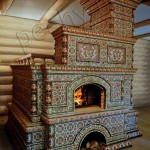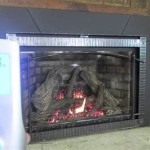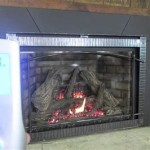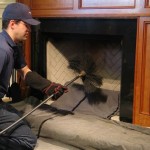Best White Colors to Paint a Brick Fireplace
Painting a brick fireplace white is a popular home renovation project that can significantly brighten a room, modernize its aesthetic, and create a focal point. However, choosing the correct white paint can be a challenging process, as the nuances in undertones, sheen, and formulation can dramatically affect the final outcome. Selecting the best white paint color involves considering the existing décor, the desired mood, and the inherent characteristics of the brick itself. This article will explore several aspects of choosing the best white paint color for a brick fireplace, providing insights into popular options and factors that influence the decision-making process.
Understanding the Undertones of White Paint
White is not a monolithic color. It exists on a spectrum, with subtle undertones that can lean towards warm, cool, or neutral. These undertones will interact with the surrounding colors in the room and the natural light, influencing how the white appears on the brick fireplace. Ignoring these undertones can lead to a result that clashes with the existing décor or appears stark and unwelcoming. Therefore, a thorough understanding of undertones is critical for selecting the ideal white paint.
Warm Whites:
Whites with warm undertones contain hints of yellow, red, or orange. These whites create a cozy and inviting atmosphere, making them well-suited for rooms that lack natural light or have a generally warm color palette. Popular warm whites include variations like "Creamy White," "Antique White," and "Swiss Coffee." These colors can soften the harshness of brick and provide a sense of comfort. Consider using warm whites if the room has warmer-toned furniture, wood accents, or flooring.Cool Whites:
Cool whites possess undertones of blue, gray, or green. These whites project a clean, crisp, and modern feel. They work well in rooms with abundant natural light or those with a cooler color scheme, such as grays, blues, or purples. Options like "Decorator's White," "White Dove," and "Chantilly Lace" are popular cool whites often chosen for their versatility and ability to brighten a space. Cool whites can provide a stark contrast against the texture of the brick, emphasizing its architectural details.Neutral Whites:
Neutral whites strive for a balance, minimizing any discernible warm or cool undertones. These are often considered the most versatile whites, as they tend to complement a wide range of color palettes and styles. However, even a seemingly neutral white can subtly lean one way or the other, so careful consideration is still necessary. Examples of neutral whites include "Simply White" and some variations of "Classic White." Neutral whites are a safe bet if unsure about the existing color balance in the room.To accurately assess the undertone, it is recommended to obtain paint samples and apply them to a small, inconspicuous area of the brick fireplace. Observe the samples under different lighting conditions throughout the day, paying attention to how the color shifts and interacts with the surrounding environment. Comparing the samples side-by-side can also help to highlight the subtle differences in undertone.
Sheen Levels and Their Impact on Brick
Beyond the color itself, the sheen level of the paint is a significant factor in determining the final appearance of a painted brick fireplace. Sheen refers to the amount of light reflected from the painted surface, influencing its durability, cleanability, and overall aesthetic. Different sheens are suitable for different applications, and selecting the correct sheen for a brick fireplace is essential for achieving the desired look and ensuring long-term performance.
Flat/Matte:
Flat or matte sheens have the least amount of reflectivity, creating a soft, non-glossy finish. They are excellent at hiding imperfections and providing a smooth, uniform appearance. However, flat paints are generally less durable and more difficult to clean, making them less suitable for high-traffic areas or surfaces prone to staining. While a flat sheen can provide a rustic look to brick, it is generally not recommended for a fireplace due to potential soot and grime accumulation.Eggshell/Satin:
Eggshell and satin sheens offer a slightly higher degree of reflectivity than flat paints, providing a subtle sheen that is more durable and easier to clean. They strike a balance between hiding imperfections and providing a washable surface. Eggshell or satin sheens are a reasonable compromise for painting a brick fireplace, offering a more forgiving finish than higher gloss options while still providing some level of cleanability.Semi-Gloss/Gloss:
Semi-gloss and gloss sheens have the highest levels of reflectivity, producing a shiny, durable, and easy-to-clean surface. They are ideal for areas prone to moisture or frequent cleaning, such as kitchens and bathrooms. However, high-gloss paints tend to accentuate imperfections, requiring meticulous surface preparation. While a full gloss might be too intense for an entire brick fireplace, a semi-gloss could be considered for the surround or mantel to add a touch of visual interest and facilitate cleaning.For a brick fireplace, an eggshell or satin sheen is generally recommended as the best option. These sheens provide a balance between durability, cleanability, and aesthetic appeal. They offer enough reflectivity to brighten the space without highlighting imperfections or appearing overly shiny. A primer specifically designed for masonry is also crucial, as it will help to seal the brick and ensure proper paint adhesion.
Preparation and Painting Techniques for Brick Fireplaces
Proper preparation is paramount for achieving a professional-looking and long-lasting paint job on a brick fireplace. Neglecting the preparation steps can lead to peeling, cracking, and uneven paint coverage, ultimately detracting from the room's aesthetic. Before applying any paint, the brick surface must be thoroughly cleaned, repaired, and primed to ensure optimal adhesion and a smooth finish.
Cleaning the Brick:
Removing dirt, soot, and efflorescence (salt deposits) is essential for proper paint adhesion. Begin by using a wire brush to scrub away any loose debris or flaking paint. For stubborn stains, a solution of trisodium phosphate (TSP) diluted in water can be used to clean the brick. Always wear protective gloves and eyewear when working with TSP. Rinse the brick thoroughly with clean water and allow it to dry completely before proceeding.Repairing Damaged Brick:
Inspect the brick for any cracks, chips, or missing mortar. Repair any damaged areas with masonry patching compound or mortar mix. Follow the manufacturer's instructions for application and drying times. Ensure that the patching compound or mortar is flush with the surrounding brick surface before applying primer. This step is crucial for creating a smooth and uniform surface for painting.Priming the Brick:
Priming the brick is a non-negotiable step. Use a high-quality primer specifically designed for masonry surfaces. These primers are formulated to penetrate the porous brick, seal it, and provide a bonding surface for the paint. Apply the primer evenly using a brush, roller, or sprayer, following the manufacturer's instructions. Allow the primer to dry completely before proceeding to the painting stage. A tinted primer can also be used to help achieve the desired final color, especially when covering darker brick with a lighter white paint.Painting the Brick:
Once the brick is properly prepared and primed, it is time to apply the chosen white paint. Use high-quality acrylic latex paint formulated for interior use. Apply the paint in thin, even coats, allowing each coat to dry completely before applying the next. Use a combination of brushes and rollers to ensure thorough coverage, paying attention to the mortar joints and crevices. Multiple thin coats are preferable to a single thick coat, as they will prevent drips and ensure a more uniform finish. Consider using a paint sprayer for faster and more even application, especially on textured brick surfaces. After the final coat of paint has dried, inspect the surface for any imperfections and touch up as needed. Properly applied paint should last for several years, maintaining the beauty and integrity of the brick fireplace.
42 Painted Brick Fireplace Gorgeous Color

How To Paint A Brick Fireplace Picking The Best For Your Paintzen

13 Inspiring Colours To Paint Your Brick Fireplace

How To Paint A Brick Fireplace Beamin Moore

The Best Way To Create White Brick Fireplaces Organized Mama

7 Beautiful Ideas For Painting Interior Brick Fireplaces

How To Paint A Brick Fireplace What Use Home With Janny

The Best Paint Colors To Go With A Brick Fireplace Kylie M Interiors

The Best Paint Colors To Go With A Brick Fireplace Painted Fireplaces White

Alabaster Sw 7008 White Pastel Paint Color Sherwin Williams Brick Fireplace Painted Fireplaces Living Room
Related Posts








